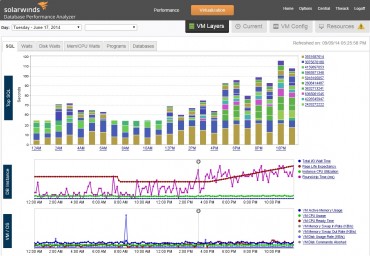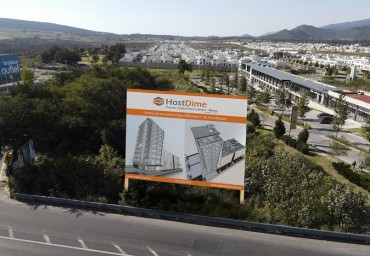REDWOOD CITY, Calif., May 9 (Korea Bizwire) — Adaptive Spectrum and Signal Alignment, Inc. (ASSIA®)
Extreme high frequency sub-millimeter waves can increase single-line data rates to terabits/second at 100 meter lengths on ordinary twisted pair phone wire. Speeds of 100 Gigabits/second can be achieved at distances over 300 meters, and speeds of 10 Gigabits/second can be achieved at distances over 500 meters.
Dr. John Cioffi, Chairman and CEO of ASSIA and Emeritus Professor at Stanford explains, “Fiber-like speeds of 10 – 1000’s of gigabits/second (Gbps) are possible by using the previously unexploited waveguide modes of current copper infrastructure. Waveguide-mode use is similar to use of millimeter-wave transmissions in advanced wireless and 5G. Waveguides can enable use of frequencies above 100 GHz for extraordinary speeds.” ASSIA develops management and optimization software for broadband and Wi-Fi networks.
Cioffi’s keynote at the Paris G.fast Summit conference on May 10, 2017 titled “Terabit DSL,” will introduce the new method. During the keynote, Dr. Cioffi will explain how 5G wireless often runs at 28 GHz and 39 GHz, while commercial microwave gear can run at 70 GHz and 90 GHz. Wireless above 300 GHz (sub-millimeter wave) is being actively researched. Early designs suggest link latency of 50-100 μs is readily achievable, which would easily allow even the most stringent 5G latency specifications of 1ms or less to be achieved with these Terabit DSLs.
Today’s fastest DSL (G.fast) uses only 200 MHz, while wireless uses 25 times as much spectrum. “The challenge was to develop practical ways to use higher frequencies over wires. Working with my ASSIA colleagues Dr. Chan Soo Hwang, Dr. Ken Kerpez, and Dr. Ioannis Kanellakopoulos, we found a solution.”
Cioffi adds, “I don’t expect anyone to need terabits/s (Tbps) to their home anytime soon. Terabits/s will be most valuable to the data centers controlled by phone companies as well as to internet companies such as Google and Microsoft. While Tbps demand may be a few years into the future, 10-100 Gbps speeds are important to networks today and will be a big market. Rapid advances in the Internet of Things (IoT), including autonomous vehicles, means the number of connected devices requiring high-speed ubiquitous connectivity will increase dramatically in the next decade. We believe that Terabit DSL will play a critical role in serving the needs of that ecosystem with ultra-high-throughput and ultra-low-latency connectivity.”
Further driving the demand for bandwidth, “Hundreds of thousands of 5G small cells and DOCSIS 3.1 cable nodes will require 5-20 gigabit backhaul. Most 5G cells will connect to a Cloud RAN controller that can use 100 gigabits/s to support dozens of cells.”
“AT&T and other telcos around the world are also deploying G.fast to apartments. G.fast speeds of 300 megabits to a gigabit can be supplied to every apartment. This differs from cable, which has shared connections that require multi-gigabit backhaul.”
“Fiber is and always will be expensive to deploy. There are a billion phone lines around the world which will now be able to deliver fiber-like speeds over existing copper infrastructure. Using the existing wires in place can dramatically reduce the cost of 5G networks.”
“There are a few years of work ahead in the industry to refine the system. LTE and now 5G wireless have proven major advances can evolve from concept to deployment in five to seven years. Data centers at Google and Facebook can leverage such new technologies in only a few years.”
Dr. Cioffi’s G.fast Summit presentation may be found here: http://www.assia-inc.com/terabit-dsl/.
About the Contributors
Dr. John Cioffi
John Cioffi is Chairman and CEO of ASSIA and Emeritus Professor at Stanford. ASSIA provides management software for broadband and Wi-Fi networks. He won the Marconi Prize (“The Nobel Prize for Communications”) for his work on DSL. Cioffi is an inventor on basic patents for ADSL, VDSL, Dynamic Spectrum Management, and vectored DSLs. His 2002 paper with George Ginis, Vectored transmission for digital subscriber line systems, introduced the concept of vectoring for high speed DSL.
Dr. Chan-Soo Hwang
Dr. Chan-Soo Hwang is a senior director of R&D at ASSIA since 2010. Prior to joining ASSIA, he was with Samsung Research labs from 1999, where he led research projects in wireless networks, connected health, and DSL. He won two IEEE ICC best paper awards. He received his Ph.D in EE from Stanford University.
Dr. Kenneth J. Kerpez
Dr. Kerpez received his Ph.D in EE communications from Cornell University in 1989. He worked at Bellcore and Telcordia for 20 years, and has been working at ASSIA for six years. Dr. Kerpez became an IEEE Fellow in 2004 for his contributions to DSL technology and standards. Dr. Kerpez has many years of experience working on communications systems and networks of all sorts, including DSL, fiber access, home networks, wireless systems, broadband service assurance, IPTV, IP QoS, triple-play services, SDN and virtualization.
Dr. Ioannis Kanellakopoulos
Ioannis Kanellakopoulos provides consulting services on technology and intellectual property strategy to ASSIA. Ioannis was a Professor of Electrical Engineering at UCLA for 8 years, where he created a research program focused on adaptive control of nonlinear systems and its applications in automated vehicles; he then came to Silicon Valley where he worked at several startups (some of which he founded) in telecommunications, ADAS sensors, and audio electronics. He has a Ph.D in Electrical Engineering from the University of Illinois, and is a Fellow of the IEEE.
About ASSIA
ASSIA is a trusted partner with the leading market share of management and optimization software solutions for global broadband and residential access networks. ASSIA’s Expresse broadband system enables Internet Service Provider companies to save significant money on subscriber care, increase customer satisfaction, and launch more revenue-generating service tiers in their access networks. ASSIA’s CloudCheck Wi-Fi system enables enterprise companies to provide, and consumers to enjoy, premium digital experiences over the residential Wi-Fi network. ASSIA has more than 80 million broadband households under contract worldwide. For more information, visit www.assia-inc.com.
Expresse® and CloudCheck® are registered trademarks of ASSIA.
“ASSIA” is an acronym for “Adaptive Spectrum and Signal Alignment.
Media Contact:
Kevin Mukai
ASSIA
(650) 654-3400
pr@assia-inc.com
Source: ASSIA Inc. via GLOBE NEWSWIRE








